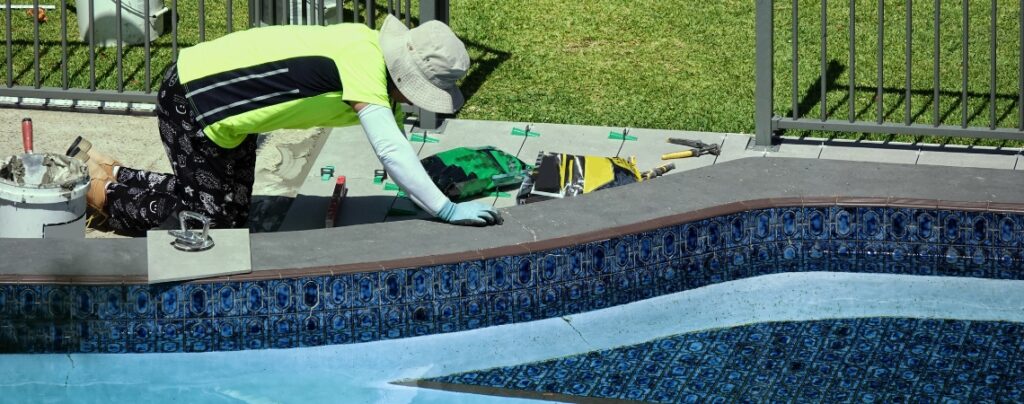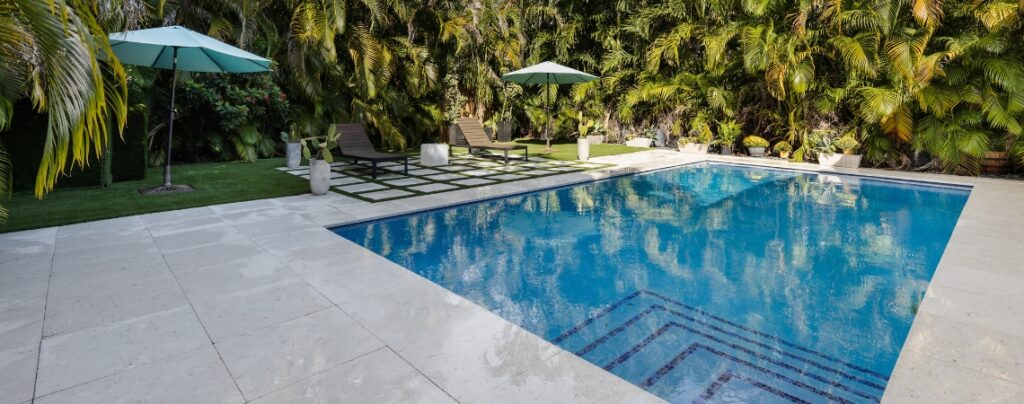Yes, any old pool can be resurfaced. Resurfacing an old swimming pool can revive it to a brand-new condition and extend its lifespan.
Owning a personal pool feels like a thing of pride. No waiting for your turn! No need to travel to your local community pool! No worries about hygiene! You can plunge in at any time you want. But like every other valuable possession, you have to take care of your pool. Resurfacing an old pool is an important part of the process.
Most people wonder, “Can you resurface an old pool?” This guide provides a comprehensive answer to this question. So, before you type swimming pool resurfacing near me on Google, reading this blog can clear your common doubts.

Pool resurfacing—also termed as pool refinishing—involves renewing the surface (removing and replacing the existing top surface layer) of an old swimming pool.
Over time, pools often deteriorate due to regular usage and frequent exposure to UV rays, harsh chemicals, and everyday wear and tear. Overlooking these issues can result in leaks, discoloration, cracks, and other consequences, requiring expensive repairs.
Resurfacing a pool gives it a new life and helps restore its visual appearance, longevity, and safety. Any structural damage is also fixed, as part of the process, before applying the new final finish. This is how resurfacing also enhances the pool’s functionality by improving water flow, reducing water loss, and maintaining energy efficiency.

The following are the most common signs indicating that it is time to resurface your old pool:
Other common signs suggesting resurfacing an old pool include rough texture, leaks, and blister contamination alike. In such situations, you must act sooner rather than later to keep the issue from worsening.
Absolutely! Resurfacing your old swimming pool is totally worth it. As mentioned in the beginning, resurfacing can give your pool a new, fresh look. The best part is that you can choose from a wide range of colors, textures, and patterns for your look even during the resurfacing phase.
Secondly, resurfacing helps enhance the safety of your swimming pool by repairing leaks and cracks. It also creates a smooth, anti-slip surface.
Next, resurfacing can enhance your pool’s functionality by reducing water loss and maintaining proper flow.
Finally, resurfacing protects the pool from further damage and saves you from costly and hassling repairs. With improved visual performance, safety, durability, and functionality, resurfacing significantly extends the longevity of your existing pool.

Typically, a concrete pool should be resurfaced every 3-7 years, while fiberglass pools can last up to 20 years without resurfacing.
Your pool builder should advise you on when you should resurface your swimming pool. Generally, the frequency varies depending on various factors like the pool type, material of construction, finish, weather and environmental conditions, and the extent of use alike.
Over time, frequent and extreme exposure to UV rays and chemicals degrade your pool’s surface. The harsher the conditions and exposure, the more your pool will need to be resurfaced.
In addition, pools that receive proper maintenance might also need less frequent resurfacing. The same goes for ensuring that all mechanical parts, like filters and pumps, are working properly. This helps avoid issues like algae growth and stains.
If you are looking for the best pool resurfacing company in Florida, Epic Watershapes can be the right fit. We have been providing pool resurfacing services in and around Florida for many years and will be honored to serve you in the best possible manner.
Your search for pool resurfacing near me ends with us. Call us for a free consultation or get a quote today.
Yes, the process of resurfacing a pool begins with identifying and fixing any underlying issues like cracks, leaks, and discoloration.
A resurfaced pool requires the same level of maintenance and care as any brand-new pool. You must have a proper maintenance routine for your pool. You may need to brush the entire surface regularly to prevent dust and algae buildup. Also, keep watching chemical levels and any damage.
With light use, a resurfaced pool can last around 12-15 years, while a frequently used pool should be resurfaced around every 7-10 years to maintain its look, functionality, safety, and overall beauty.
The cost of resurfacing an old pool depends on various factors like the extent of damage and the existing condition of the pool, the level of labor involved, and more. The cost also varies by material; for example, pebble tec resurfacing costs are much different than those of a fiberglass pool. Ask your pool contractor for an upfront quote to understand the pool resurfacing costs.